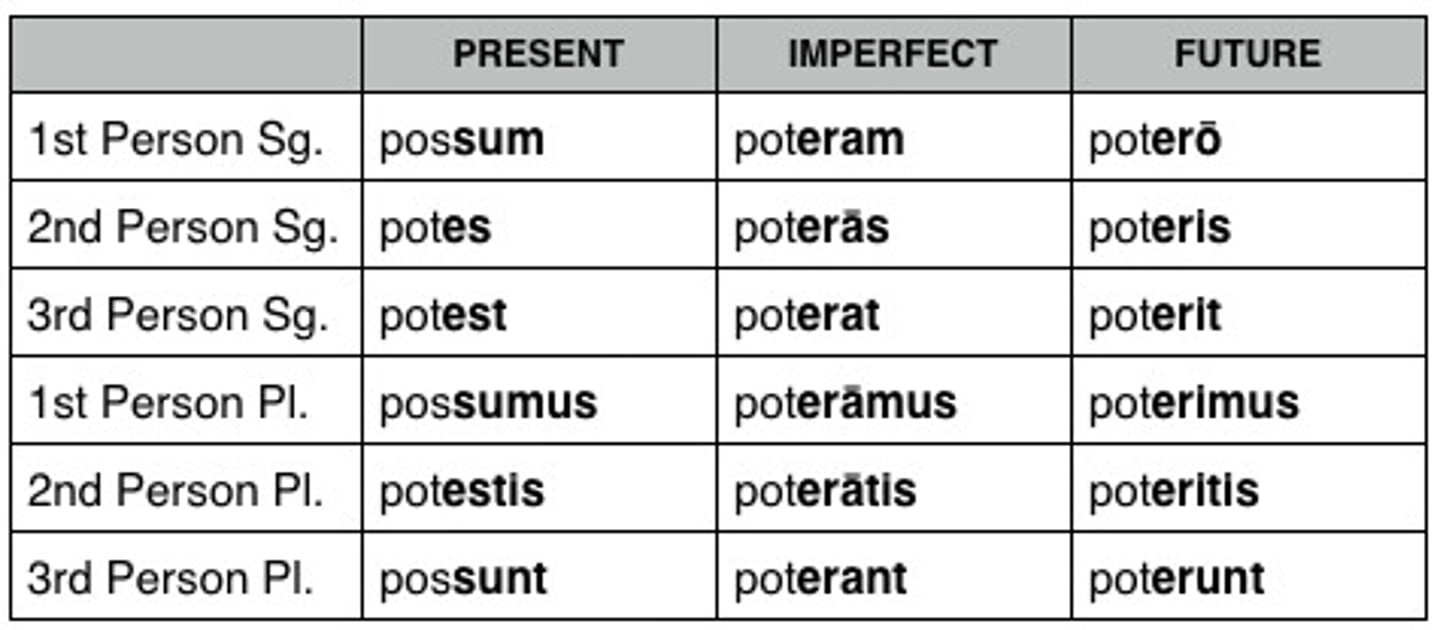Latin Grammar, Ch. 8
1/3
There's no tags or description
Looks like no tags are added yet.
Name | Mastery | Learn | Test | Matching | Spaced |
|---|
No study sessions yet.
4 Terms
Perfect Active Indicative Tense (Nouns)
Indicates a past tense.
1. The perfect is formed by adding personal endings to the stem of the third principal part. To find the stem, remove the -i- from the third principal part:
amāv(ī) - first conjugation
docu(ī) - second conjugation
fu(ī) - sum
2. Two meanings:
a. The historical perfect corresponds to the simple past tense in English, and has been described as "the tense of narration (as opposed to the Imperfect, the tense of description)
b. The present perfect refers to an action that happened in the past, but stresses the present result of that completed action. eg. I have finished my homework.

Perfect Active Infinitive
Formed by adding -isse to the perfect stem
eg amāvisse > to have loved
Forms of Possum
"to be able to;" should be accompanied by a complementary infinitive.

Infinitive as a Noun
When used as a noun, the infinitive is considered neuter and singular.
eg. Amāre est bonum. > To love is good; Loving is a good thing.
Can be translated with either an infinitive or a gerund in English.